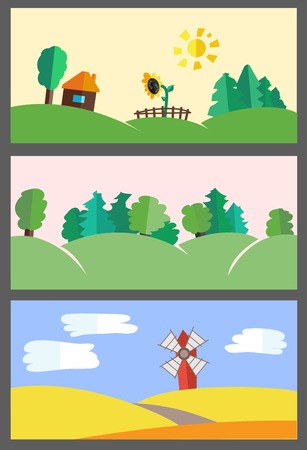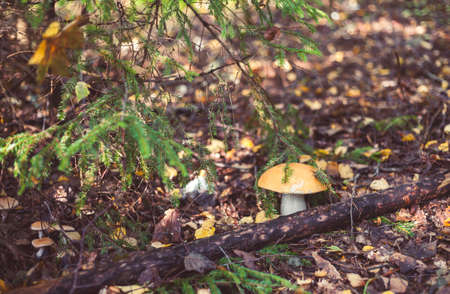Introduction to Mushroom Foraging in the UK
There’s something truly magical about wandering through the rolling fields and ancient woodlands of the British countryside, wicker basket in hand, eyes peeled for nature’s hidden treasures. Foraging for edible mushrooms has been a beloved pastime here for generations—an activity that blends adventure, learning, and togetherness. Whether you’re a curious child or an experienced adult, mushroom foraging offers a wonderful way to connect with nature and each other. In Britain, this tradition is woven into our cultural fabric, with stories passed down about grandparent-led expeditions on misty autumn mornings and joyful family picnics beside hedgerows. Not only does mushroom hunting encourage us to slow down and notice the small wonders around us, but it also teaches valuable lessons about respect for wildlife and responsible harvesting. Above all, it’s a delightful excuse to gather your loved ones, head outdoors, and create memories that will last a lifetime—all while discovering delicious ingredients for your next home-cooked meal.
2. Identifying Edible Mushrooms: A Beginner’s Guide
Heading out as a family to forage for wild mushrooms in the British countryside is a wonderful adventure, but identifying safe, edible varieties is essential. Here are some easy-to-understand tips and UK-specific advice to help beginners spot tasty mushrooms without worry.
Start with Common, Recognisable Species
Foraging success comes from focusing on a handful of well-known edible mushrooms. These species are abundant across woodlands, meadows, and even local parks throughout Britain. Here are three popular choices for families:
| Mushroom Name | Key Features | Habitat | Season |
|---|---|---|---|
| Field Mushroom (Agaricus campestris) | White cap, pink to brown gills, pleasant mushroom scent | Grasslands, meadows, garden lawns | Late summer to autumn |
| Chanterelle (Cantharellus cibarius) | Golden yellow, wavy edges, fruity aroma, forked gills running down the stem | Damp woodlands, especially under beech or oak trees | Summer to early autumn |
| Puffball (Lycoperdon perlatum) | Round, white or cream ball, soft texture when young, no visible gills or stem ring | Woodland clearings, grassy verges | Late summer to early autumn |
Simple Safety Rules for Families
- If in doubt, leave it out: Only pick mushrooms you can confidently identify—never taste a mushroom unless you’re 100% sure it’s safe.
- Avoid lookalikes: Many edible mushrooms have toxic twins. For example, avoid picking mushrooms with white gills or those that bruise yellow or red.
- No nibbling on the trail: Encourage children to wait until you return home and double-check your finds with a guidebook or an experienced local forager before eating.
Telltale Signs of Edibility (and Danger)
- Scent: Edible mushrooms usually have a pleasant earthy or nutty smell. Avoid any that smell unpleasant or chemical-like.
- No bright colours: Most safe-to-eat UK mushrooms have muted tones—avoid anything overly bright or garish.
A Gentle Family Tip
Mushroom hunting is as much about enjoying nature together as bringing home a wild harvest. Take your time; let children compare shapes and colours and encourage sketching or photographing interesting finds for later learning at home.
With these beginner-friendly tips in mind, your family’s countryside adventures can be fun and reassuringly safe—building knowledge and memories side by side!

Safety First: Avoiding Toxic Mushrooms
When it comes to foraging for mushrooms in the British countryside, safety must always come first. The woodlands and meadows are home to a wonderful array of fungi, but not all are friendly to our tummies. Some can cause mild discomfort, while others can be extremely dangerous. To keep your family’s adventure safe and enjoyable, it’s essential to learn how to spot the difference between edible treasures and hazardous lookalikes.
Recognising Local Species to Avoid
The UK is home to several toxic mushrooms that can easily be mistaken for edible varieties. For example, the Death Cap (Amanita phalloides) and the Destroying Angel (Amanita virosa) are both highly poisonous and sometimes resemble harmless species. The False Morel (Gyromitra esculenta) and certain types of Inky Caps also pose risks if eaten or prepared incorrectly. Always consult an up-to-date field guide, and when in doubt, leave the mushroom where it grows.
First Aid Basics for Accidental Ingestion
If you suspect someone has eaten a toxic mushroom, remain calm. Remove any remaining pieces from their mouth and encourage them not to eat or drink further. Contact NHS 111 or your local GP immediately, providing as much information as possible about the mushroom—photos can be especially helpful. Keep the person comfortable while waiting for medical advice, and never try home remedies.
Teaching Children Respect for Nature
Foraging is a fantastic way to help children connect with nature, but it’s vital they understand not everything found outdoors is safe to touch or taste. Turn each walk into a gentle learning moment: explain why we only pick mushrooms we’re certain about, model careful observation, and encourage little ones to ask questions before picking anything. By nurturing curiosity alongside caution, you’ll help them build lifelong respect for the countryside’s wild wonders.
4. Best Places and Times for Mushroom Foraging in Britain
Mushroom foraging in Britain is a delightful adventure, offering a chance to explore the stunning landscapes of England, Scotland, and Wales while discovering edible treasures. Knowing where and when to forage is key to a successful—and safe—experience. Here’s some helpful local advice to ensure your family outing is both fruitful and respectful of nature.
Where to Forage: Top Locations Across Britain
The British countryside is dotted with ideal spots for mushroom hunting. Ancient woodlands, meadows, and even some coastal areas are rich in fungal diversity. However, always seek permission if venturing onto private land, and remember to follow the Countryside Code: leave no trace, pick only what you need, and never disturb rare species.
| Region | Recommended Foraging Spots | Common Edible Mushrooms |
|---|---|---|
| England | New Forest (Hampshire), Epping Forest (Essex), Lake District (Cumbria) | Chanterelles, Cep (Porcini), Hedgehog Mushrooms |
| Scotland | Cairngorms National Park, Trossachs Forest, Galloway Forest Park | Penny Bun, Chanterelle, Horn of Plenty |
| Wales | Brecon Beacons, Snowdonia National Park, Pembrokeshire Coast Path Woodlands | Bay Bolete, Parasol Mushroom, Field Mushroom |
When to Forage: Best Seasons and Timing Tips
The prime season for mushroom foraging in Britain is autumn—typically from late August through November—when cooler temperatures and damp conditions create the perfect environment for many edible species. Some early varieties can be found as soon as July after summer showers. Early morning is the best time to start your search; mushrooms are freshest then and less likely to have been picked by others or nibbled by wildlife.
Seasonal Foraging Guide by Month
| Month | Mushrooms to Look For | Top Tips |
|---|---|---|
| July–August | Chanterelles, Chicken of the Woods | Check mossy woodland floors after rain; bring a basket for ventilation. |
| September–October | Cep (Porcini), Hedgehog Mushrooms, Penny Bun | Search near old oaks and beech trees; use a soft brush to clean on site. |
| November–Early December | Wood Blewits, Field Mushrooms (in mild years) | Avoid frosty mornings; stick to open fields and grassy verges. |
Countryside Etiquette & Safety Reminders
Always forage sustainably: take only what you’ll eat and leave some behind for wildlife. Use a pocket knife to cut mushrooms at the base rather than pulling them up—this helps preserve the delicate underground network (mycelium) for future growth. Respect local rules; some parks may restrict picking during certain times or ban it altogether to protect rare species. Finally, bring along an illustrated field guide or join a local guided walk for added safety—and memorable family learning moments.
5. Simple and Delicious Mushroom Recipes for Families
Foraging for mushrooms in the British countryside isn’t just about exploring nature—it’s also a wonderful way to bring the family together over a wholesome meal. Cooking with your foraged finds can be both fun and educational, especially when you involve children in simple kitchen tasks. Here are some tried-and-tested British recipes that transform your wild mushrooms into comforting family favourites.
Mushroom and Cheddar Toasties
This classic recipe is perfect for a cosy lunch after a morning of foraging. Let little hands help by sprinkling cheese or arranging mushroom slices.
Ingredients: Freshly foraged edible mushrooms (such as chanterelles or field mushrooms), sliced; mature cheddar cheese; wholegrain bread; butter.
Steps: Butter the bread, layer with sautéed mushrooms and grated cheddar, then toast in a pan until golden. Serve warm with a side of tomato soup.
Hearty Wild Mushroom Soup
A steaming bowl of mushroom soup is a true British comfort food. Involve children by letting them stir and add herbs.
Ingredients: A mix of wild mushrooms, onion, garlic, vegetable stock, thyme, double cream.
Steps: Sauté onions and garlic, add chopped mushrooms and thyme, pour in stock, simmer until tender, then blend until smooth. Stir in cream before serving with crusty bread.
Family Mushroom Risotto
This creamy dish is easy to customise and lets everyone join in—kids love pouring in stock or stirring the pot.
Ingredients: Arborio rice, wild mushrooms, vegetable stock, onion, peas, Parmesan cheese.
Steps: Cook onions and mushrooms gently, stir in rice, gradually add stock while stirring, mix in peas near the end. Finish with grated Parmesan and enjoy together.
Top Tips for Family Cooking
- Always triple-check your mushrooms are edible before cooking.
- Give children age-appropriate jobs like washing mushrooms or grating cheese.
- Use recipes as opportunities to talk about food safety and where our food comes from.
Savouring homemade meals made from your own foraged mushrooms not only fills tummies but also builds lasting family memories—one delicious bite at a time.
6. Ethical Foraging and Respecting Nature
Foraging for mushrooms in the British countryside is not just about finding delicious ingredients—it’s also a wonderful opportunity to teach our children about caring for the environment. Responsible foraging helps preserve wild habitats, ensuring that these beautiful places and their treasures remain for future generations. It’s important to only take what you need, leave rare or unfamiliar species untouched, and never disturb wildlife or trample delicate plants. Many areas have local guidelines or codes of conduct for foragers—these are worth checking before you set out.
Responsible Foraging: Setting a Good Example
As parents and carers, we can model ethical foraging habits by showing our children how to tread lightly and respect nature’s balance. Explain why it’s vital to leave some mushrooms behind—for animals who rely on them for food and to allow new fungi to grow. Encourage little ones to use baskets rather than plastic bags, which help spread spores and support the ecosystem.
Hands-On Learning: Making Conservation Fun
Turn your family’s mushroom hunt into an interactive lesson. You might create a simple “nature code” together: look, learn, and leave some behind. Use magnifying glasses to observe tiny forest creatures or sketch different fungi in a nature journal. These activities make conservation meaningful—and memorable—for children.
Respecting Wildlife and Each Other
Remind everyone to keep noise levels down so as not to disturb birds and other woodland residents. Stick to marked paths where possible, and avoid picking mushrooms from protected sites or private land without permission. Sharing stories about the role fungi play in forest health can spark curiosity and foster a lasting love for the natural world.
By weaving ethical foraging practices into our countryside adventures, we help children build a deep respect for both the land and its living wonders. Together, we can enjoy the bounty of Britain’s wild spaces while safeguarding them for years to come.

